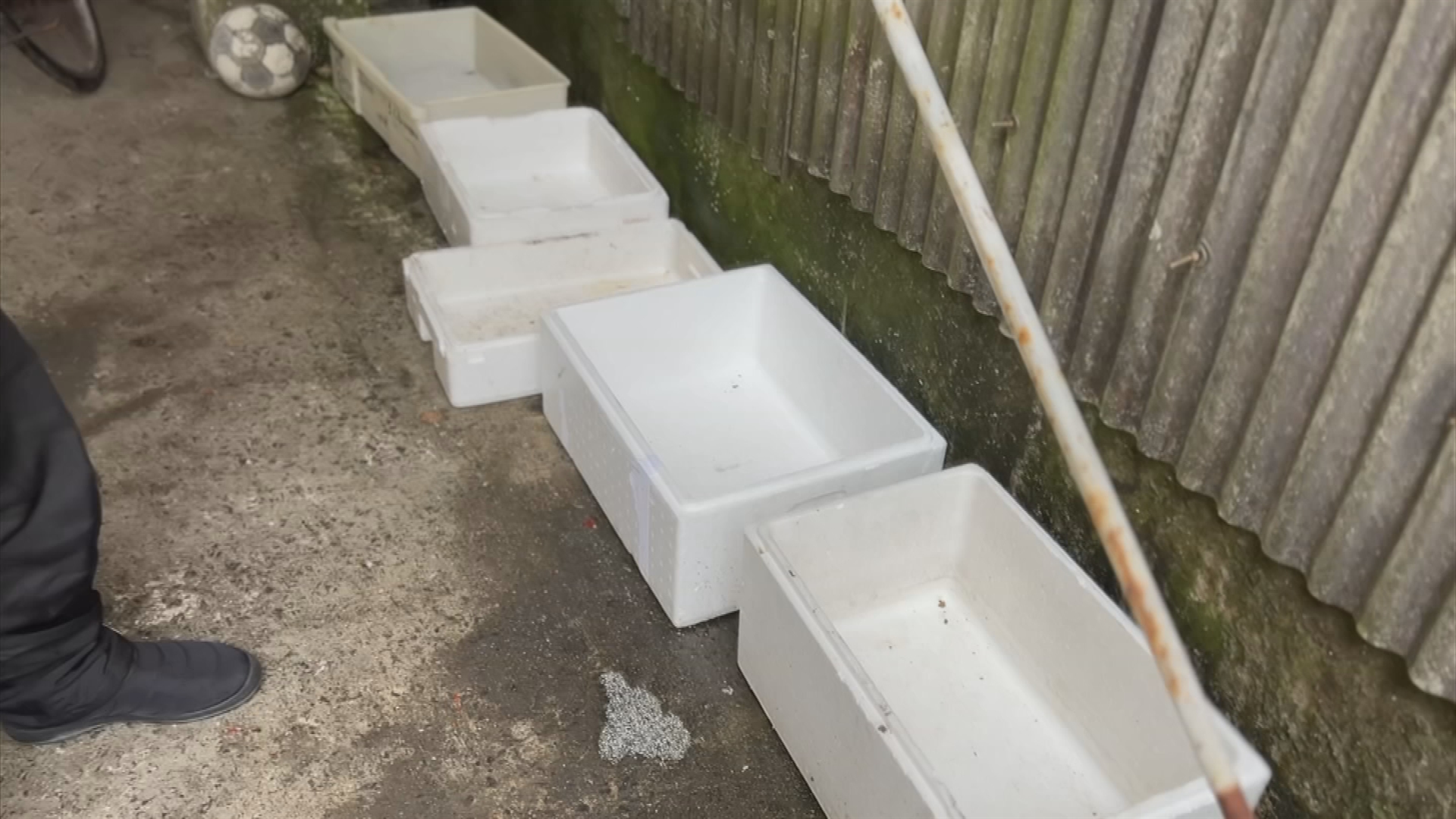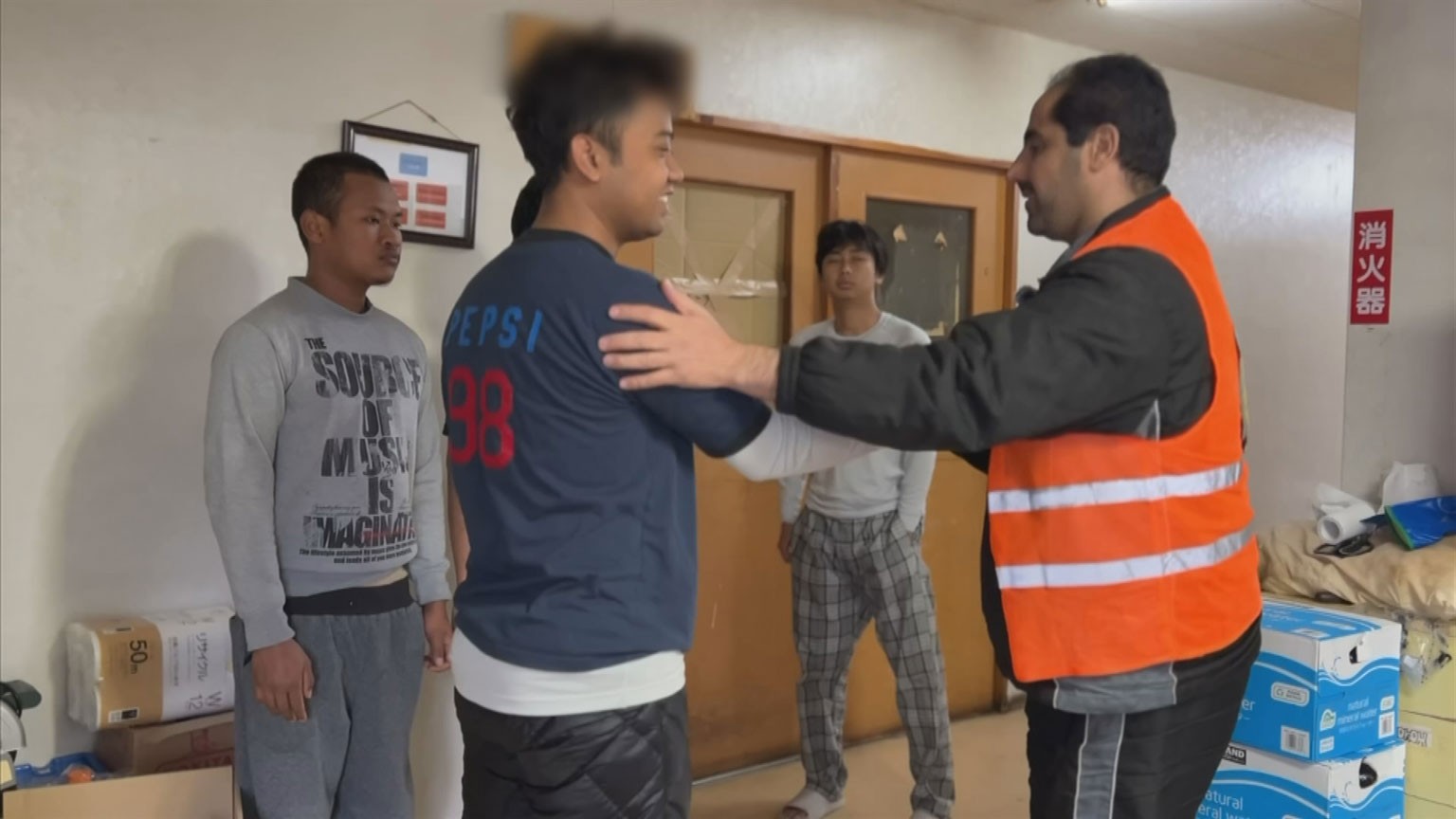Brazilians left in the dark
Brazil-born Leo Tachibana was at home in Anamizu Town when the disaster struck. He has been in and out of Japan for work over the past two decades. Leo has no problem communicating in Japanese at work and has put down roots in his adopted neighborhood that is home to a 90-strong Brazilian population.
But the events on New Year's Day changed everything.

When the municipal emergency broadcast called on people to evacuate, the words were too technical for him to understand. The only word he caught was "tsunami."
Leo and some fellow Brazilians managed to reach an evacuation center, but he says, "We could not fully understand what we needed to do to stay safe."
With the help of friends, he was able to evacuate to Fukui Prefecture three days later, but he still had difficulty accessing essential information.
Leo did not know that Ishikawa Prefecture's website has emergency information translated in multiple languages, including Portuguese.

In February, Leo will move again to start work at a factory in another prefecture. He needs a few months to get back on his feet and hopes to return to Anamizu.
Access to multilingual information
Tamura Taro, a specialist in crisis communications for foreigners, says that many people feel disadvantaged in terms of getting basic and vital information. Just after the disaster, he visited several evacuation centers in Nanao City and Noto Town. He saw there were hardly any signboards — or information — in anything other than Japanese.

At evacuation shelters, complicated information is shared orally or in written form with few translations. Prefectural authorities provide emergency information in multiple languages via phone services or on websites.
Tamura explains the multilingual services are sometimes unknown, or used so infrequently that people don't think to use them in case of a disaster. He wants local governments to reach out to social networking sites that foreigners use regularly.
Tamura says an existing multilingual sheet system, created by the Japanese government and the Council of Local Authorities for International Relations (CLAIR), could be useful.

The system is accessible on the CLAIR home page, allowing users to input specific information that can be printed in multiple languages. In addition to easy Japanese, there are 14 languages, including Indonesian, Vietnamese, and Portuguese.
"Multilingual signs do more than just replace words," says Tamura. "Those signs provide a sense of security for foreigners but also remind Japanese people that there are foreigners around who might not understand Japanese and are in difficulty."

Technical trainees tough it out
The situation for foreign technical trainees seems to have been especially dire following the quake. There are more than 4,000 of them, representing the largest foreign population in the prefecture.
Salim Mazen is a Syrian national who runs a trading company in Japan. He heads a group of volunteers from the Toyama Muslim Center (TMC) in neighboring Toyama Prefecture. His team arrived to deliver relief supplies in the stricken area on January 5.

Mazen is helping the technical trainees. A group of about 50 from southeast Asia that works with the local fishing industry relies on twice-weekly deliveries.
The young men said they went to an evacuation center after the quake but felt uncomfortable there and decided to return to their dormitory. The language barrier meant they could not understand instructions and they were worried about behaving differently from the Japanese.
They soon ran out of food and water and were barely getting by. They collected water from snow and the roof to wash their hands and bodies. "I found out they were surviving on rainwater, sometimes drinking the water," says Mazen.

"When I came here on January 5 and was about to unload the bottled water, one of them approached me and asked whether I had anything to drink. He was so thirsty I gave him some juice I had in the car. I will never forget the desperation I saw in his eyes."
With so many roads cut, shops closed and no public transport, the trainees are stuck. "These people live by themselves with little connection to the local community, even at work," says Mazen.
"So, if something happens, they are on their own. They are here for only a limited period of time, they only speak a little Japanese. Everything needs to be delivered to them, even if it's just toilet paper, and they are still in need of emergency support. We want to help these people. It is our duty."

Limited support
According to Tamura, there are structural reasons behind the isolation of the technical trainees. Their stay in Japan is usually no more than five years, meaning they have little connection with the local community or opportunity to learn sufficient Japanese to prepare for a disaster.
In some cases, the supervising bodies and small companies where the trainees work have themselves suffered severe damage and temporarily lost their capacity to fulfill their duty of care.
It is also a matter of choice that foreign nationals might feel more comfortable gathering together outside of the official shelters to look after one another. "This makes it difficult to know the precise whereabouts of foreigners," notes Tamura, who wants officials, volunteers, and workers at evacuation shelters to reach out.
More information needed
Tamura notes that as time passes, the aftermath of a disaster can make life more complicated: "Some foreigners may have lost their jobs and will need to go through various procedures. They may need to apply for various documents, including a disaster victim certificate.
"A great deal of information about support, more interpreters and translating services will be needed considering the scale of this disaster".

A particular concern for foreign evacuees is the visa situation. The Immigration Services Agency is providing people in the affected region with visa extensions until June 30, even if they are set to expire before that.
Foreigners who can't resume work can apply for a temporary change of employer or work, but not for more than three months. This measure also applies to technical trainees who are usually forbidden from changing work or employer.
People who are unable to reach an immigration office can lodge applications via mail or fax. See details on the Immigration Agency website:
https://www.moj.go.jp/isa/10_00182.html
(*You will exit the NHK WORLD-JAPAN website)
Useful articles and information in English and several languages can be found at the following sites:
Useful Info (NHK World-Japan)
https://www3.nhk.or.jp/nhkworld/en/news/backstories/2949/
Multilingual News and BOSAI Info (NHK World-Japan)
https://www3.nhk.or.jp/nhkworld/en/multilingual_links/
CLAIR's multilingual sheet system to be used in case of a disaster can be found on the organization home page at https://dis.clair.or.jp/
(*You will exit the NHK WORLD-JAPAN website)
*Journalists and directors who contributed to the program this article is based on are credited in alphabetic order: Goto Hiroki, Isogai Sawa, Rodrigue Maillard-Belmonte, Morita Yurina, Takaya Natsuko, and Yoshikawa Ryuichi.




